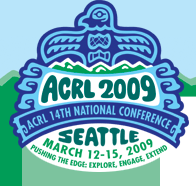Planet Periodicals: Weird Tales of the Sequentially PublishedLet’s look seriously at serials for a moment. A serial is defined, according to the ALA’s Association for Library Collections and Technical Services (ALCTS), as “print or non-print publications issued in parts, usually bearing issue numbers, issue dates, or both. A serial is expected to continue indefinitely.” That basic description makes serials sound pretty understandable, right? What ALCTS won’t tell you is that serials live in their own little worlds. Each serial develops its own rules (or, seemingly, un-rules) for existing. You also won’t find a definition that states how it takes a village (or at least an unincorporated township) to make a serial. All titles need some form of commitment from a group of people to keep producing content. There also has to be a willing subscriber for that content. Somebody has to be so intrigued by the serial that they are willing to pay for it (or be intrigued with the subscriber enough to pay to advertise in it) daily, weekly, monthly, quarterly, or yearly. ALCTS also doesn’t say outright that serials are weird. But really, some of them are. They may exhibit consistent publication patterns, while others choose to exist in their own brand of time. Some go through periods of identity crises complete with name changes, only to revert to their original moniker (think: Prince). A serial may exist as the laboratory for thought in a field of study. Some have roots that go deep into fancy, prestigious academies. Others seek to support a particular industry. Some serials extol the joys of hobbies. Pick just about any human interest and there will be a serial for it. Each title represents a distinct part of the human experience. You probably have some serials that occupy a special place in your academic and personal lives, and can probably name many more. However, without good cause, or serious browsing, you won’t come in contact with even 1% of the serials out there. There are too many. The following list will acquaint you with just a few of the unknown and unsung publications that you might have otherwise missed. All of these gems can be found in the UW collection. Progressive Grocer: This trade publication courts, you guessed it, progressive grocers. Born in 2002, this title remains in publication today. The last page shows new food products, which are often freakish. Haven’t you always wondered about the most attractive way to display cereal boxes? Wonder no more because you can find it here! Sludge Newsletter: the newsletter on municipal wastewater & biosolids: This Washington State newsletter ceased publication in 2002. This title gives you confidence to use the word “biosolids” and can help you talk about the recent history of Washington’s sewage (from 1976-2002). Sludge can help you develop a stronger “sewage talking” game about the past. Sounds like a great ice breaker for that next party you attend. The Journal of Irreproducible Results: This title is, well, goofy. It started in 1955 and continues today. You will find issues from 1968-1985 in the UW’s collection and you can still look at the favorite articles on the journal's website. Science is sometimes funny. This might seem like an oxymoron, yet how can you remain skeptical after reading Stanfield’s article, “A Double blind efficacy trial of placebos, extra strength placebos, and generic placebos” (v.49 no.5, Sept 2005)? Just knowing such content exists should make you feel like you and science can be comfortable, hilarious friends. Now it’s your turn to go forth and find the weird stuff that makes you think, “Seriously? Somebody publishes this?” Hopefully you will find something that helps you discover more about the world of human behavior that is promulgated in serials. Let the wild world of sequentially published works teach you something new. **Special thanks to Suzzallo’s Serials Services department. They were gracious about helping me find some of the weird stuff that was hiding in their collection. |
April 15,
2009
|





